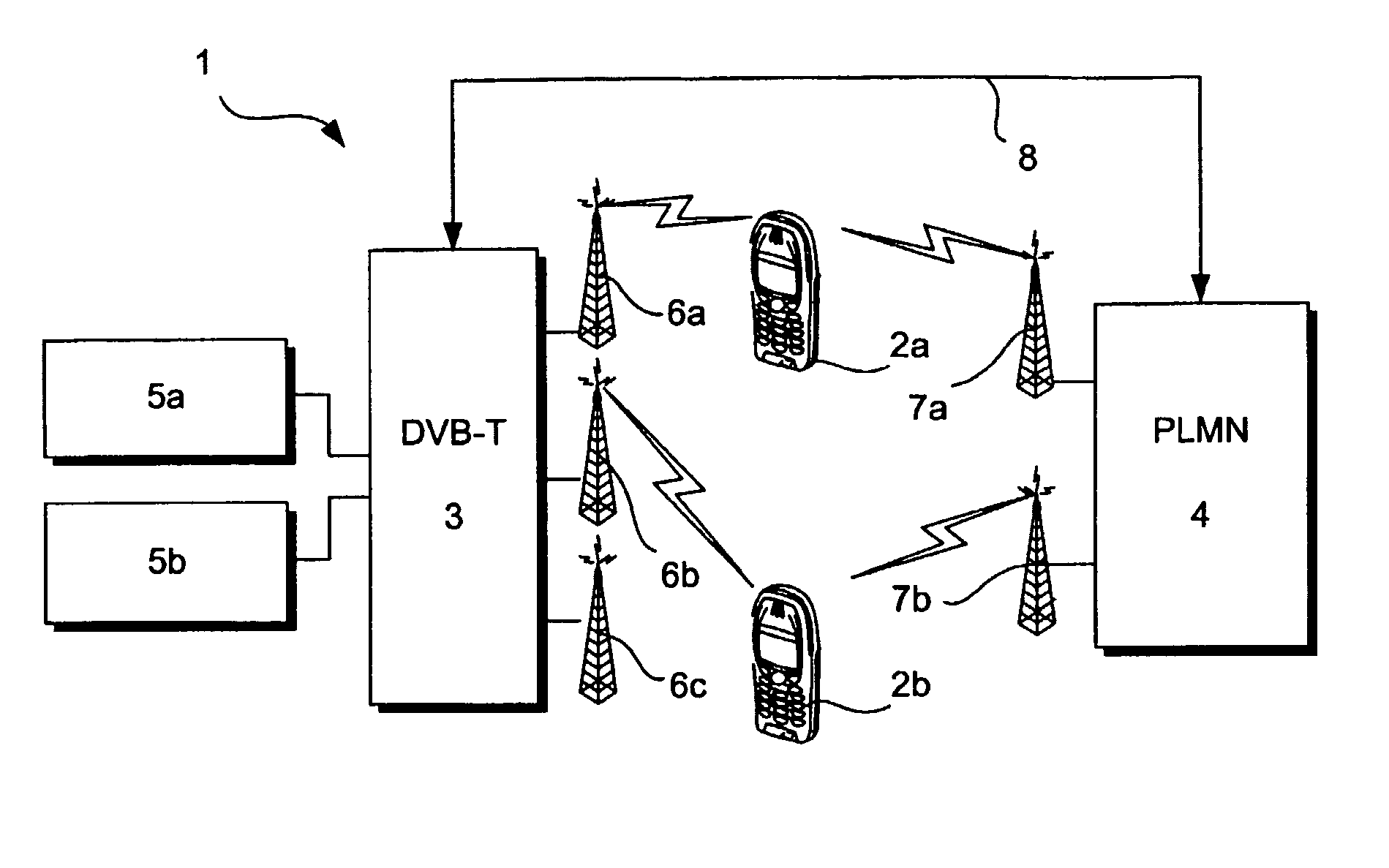Method For Data Reception In A Multi-Function Receiving Device
- Summary
- Abstract
- Description
- Claims
- Application Information
AI Technical Summary
Benefits of technology
Problems solved by technology
Method used
Image
Examples
Embodiment Construction
[0028]FIG. 1 illustrates schematically a communication system 1 in which mobile user equipment in the form of mobile terminals, such as telephone handsets 2a, 2b, are configured to receive transmissions from a digital broadcast network 3 which, in this particular example, is a DVB-T network, and to enable communication through a public land mobile network (PLMN) 4. The digital broadcast network 3 transmits content such as audiovisual content, visually displayable data, audio files or data files to the handsets 2a, 2b.
[0029] The content is obtained from data stream servers 5a, 5b in Internet protocol (IP) so that the network can provide an IP Datacast (IPDC) service over the digital broadcast network 3. Two such servers 5a, 5b are shown by way of example although in practice there may be many more. The stream servers 5a, 5b supply content in the form of IP datagrams. The datagrams are embedded into multi-protocol encapsulation (MPE) that are incorporated into MPEG-2 transport stream...
PUM
 Login to View More
Login to View More Abstract
Description
Claims
Application Information
 Login to View More
Login to View More - R&D
- Intellectual Property
- Life Sciences
- Materials
- Tech Scout
- Unparalleled Data Quality
- Higher Quality Content
- 60% Fewer Hallucinations
Browse by: Latest US Patents, China's latest patents, Technical Efficacy Thesaurus, Application Domain, Technology Topic, Popular Technical Reports.
© 2025 PatSnap. All rights reserved.Legal|Privacy policy|Modern Slavery Act Transparency Statement|Sitemap|About US| Contact US: help@patsnap.com



